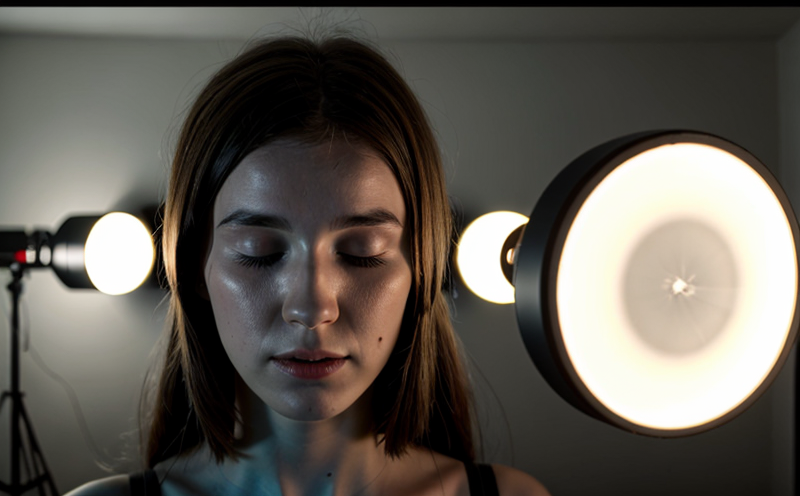IEC 62612 Flicker Testing of Self Ballasted LED Lamps
The International Electrotechnical Commission (IEC) Standard IEC 62612 specifies the method for measuring and evaluating flicker in self-ballasted LED lamps. This standard is crucial for ensuring that lighting systems meet stringent quality control requirements, particularly in environments where visual discomfort due to flickering light can be detrimental to human health and safety.
Flicker is a phenomenon characterized by periodic variations in brightness of artificial light sources, which can cause eye strain or even seizures in photosensitive individuals. Self-ballasted LED lamps are designed with integrated ballasts that provide the necessary current regulation for the LEDs within the lamp. Testing these lamps under IEC 62612 ensures compliance with international standards and helps manufacturers produce products that meet global market demands.
The testing process involves several critical steps to ensure accurate measurement of flicker. First, the lamps are carefully prepared according to specified procedures outlined in the standard. This includes ensuring proper mounting and positioning within a controlled environment. Next, specialized equipment measures the light output at various frequencies to identify any variations that could indicate flicker.
One key aspect of this testing is the use of specific devices such as photometers and oscilloscopes. These instruments are calibrated to detect minute changes in light intensity over time. The data collected from these measurements is then analyzed using mathematical algorithms provided by IEC 62612, which provide a flicker index that quantifies the severity of any observed flicker.
Another important consideration during testing is the ambient conditions under which the lamps are operated. Temperature, humidity, and voltage fluctuations can all affect the performance of LED lamps and contribute to perceived flicker. Therefore, strict control over these environmental factors ensures reliable test results.
The significance of IEC 62612 extends beyond mere compliance; it also serves as a benchmark for improving product quality. By adhering to this standard, manufacturers can ensure that their self-ballasted LED lamps do not only meet but exceed expectations in terms of flicker performance. This is particularly important given the increasing trend towards energy-efficient lighting solutions worldwide.
In summary, IEC 62612 provides a robust framework for evaluating flicker in self-ballasted LED lamps. Through rigorous testing and analysis, this standard helps identify potential issues early in the production cycle, allowing manufacturers to address them before product release. Ultimately, compliance with IEC 62612 contributes to safer, more comfortable lighting environments that benefit both consumers and businesses.
Applied Standards
| Standard | Description |
|---|---|
| IEC 62612:2013 | International Standard specifying the method for measuring and evaluating flicker in self-ballasted LED lamps. |
| ISO/IEC Guide 98-4 | Guide providing rules for the interpretation of conformity with specified requirements. |
| Flicker Index Calculation | Description |
|---|---|
| Flicker Index (FI) | Quantifies the severity of flicker, ranging from 0 to 1. |
| Calculation Formula | FI = max(|I(t) - | / ( + |I(t)|)), where I(t) is instantaneous luminous intensity and is the mean luminous intensity. |
Benefits
Compliance with IEC 62612 offers numerous advantages for manufacturers, quality managers, compliance officers, and R&D engineers involved in the development and production of self-ballasted LED lamps:
- Enhanced Product Quality: By ensuring consistent flicker performance across all units, this standard helps maintain high product quality.
- Better Consumer Satisfaction: Consumers experience fewer complaints about eye strain or discomfort resulting from flickering lights.
- Increased Market Access: Meeting international standards broadens market reach and enhances brand reputation.
- Regulatory Compliance: Avoids potential legal issues and penalties associated with non-compliance.
In addition to these tangible benefits, adherence to IEC 62612 fosters innovation within the industry by encouraging continuous improvement in lighting technology. This standard serves as a foundation upon which future developments can be built, ensuring that advancements are made responsibly and effectively.
Quality and Reliability Assurance
Ensuring quality and reliability is paramount when it comes to self-ballasted LED lamps. The process begins with selecting high-quality raw materials and components, followed by meticulous design and manufacturing processes. However, even the best products can falter without proper testing.
Incorporating IEC 62612 into your quality assurance program is essential for several reasons:
- Early Detection of Issues: Regularly performing flicker tests helps catch any potential problems early in the production cycle, preventing costly rework or recalls later.
- Consistent Performance: By consistently applying this standard across all manufacturing batches, you can ensure that every lamp meets strict quality criteria.
- Predictable Outcomes: With standardized testing methods and consistent results, you gain greater confidence in the performance of your products.
To further enhance reliability, consider integrating additional measures such as accelerated life testing (ALT) and environmental stress screening (ESS). These complementary tests help uncover vulnerabilities that might not be apparent through standard flicker testing alone. Together, these practices form a comprehensive quality assurance strategy tailored to meet the unique needs of self-ballasted LED lamps.





